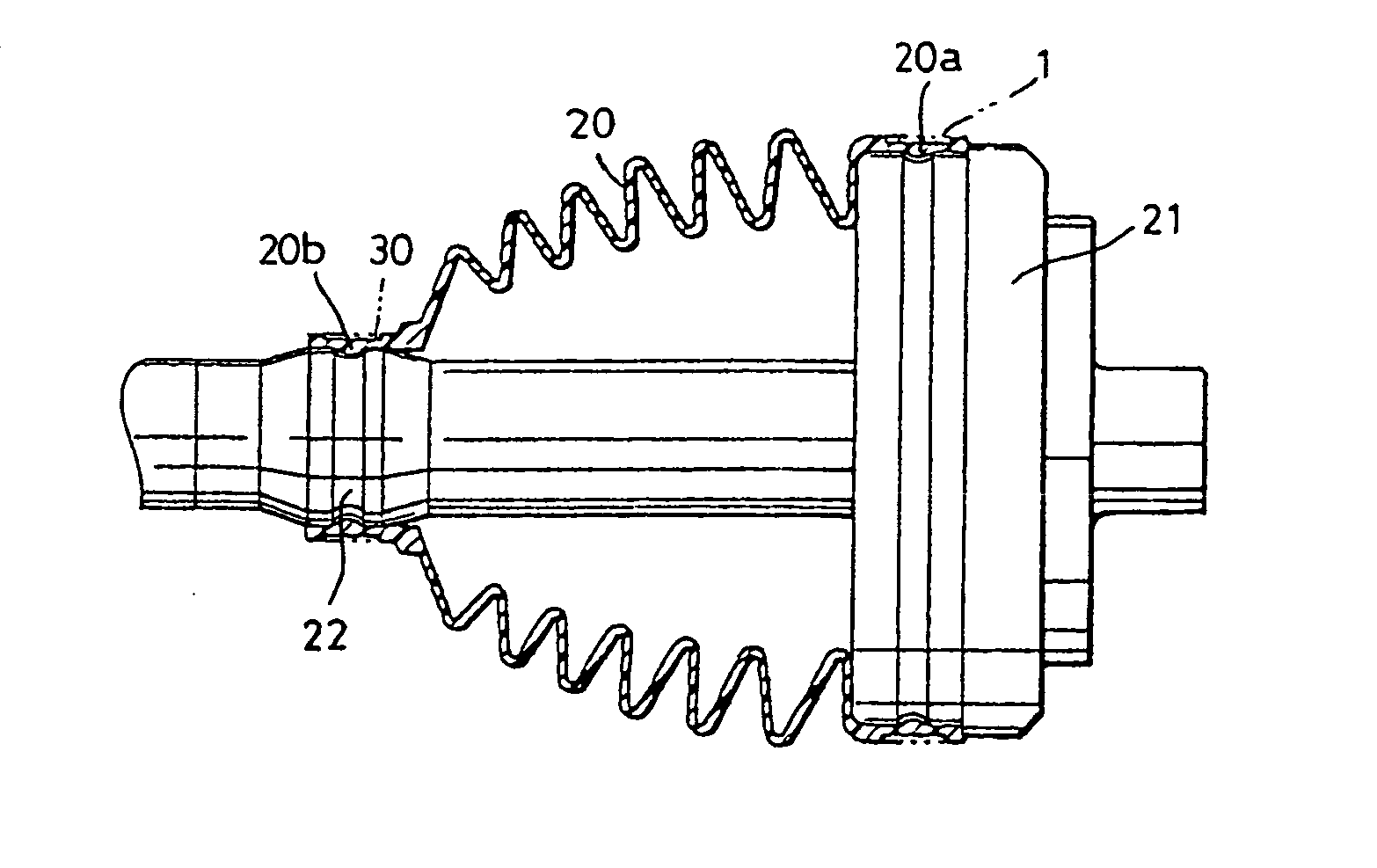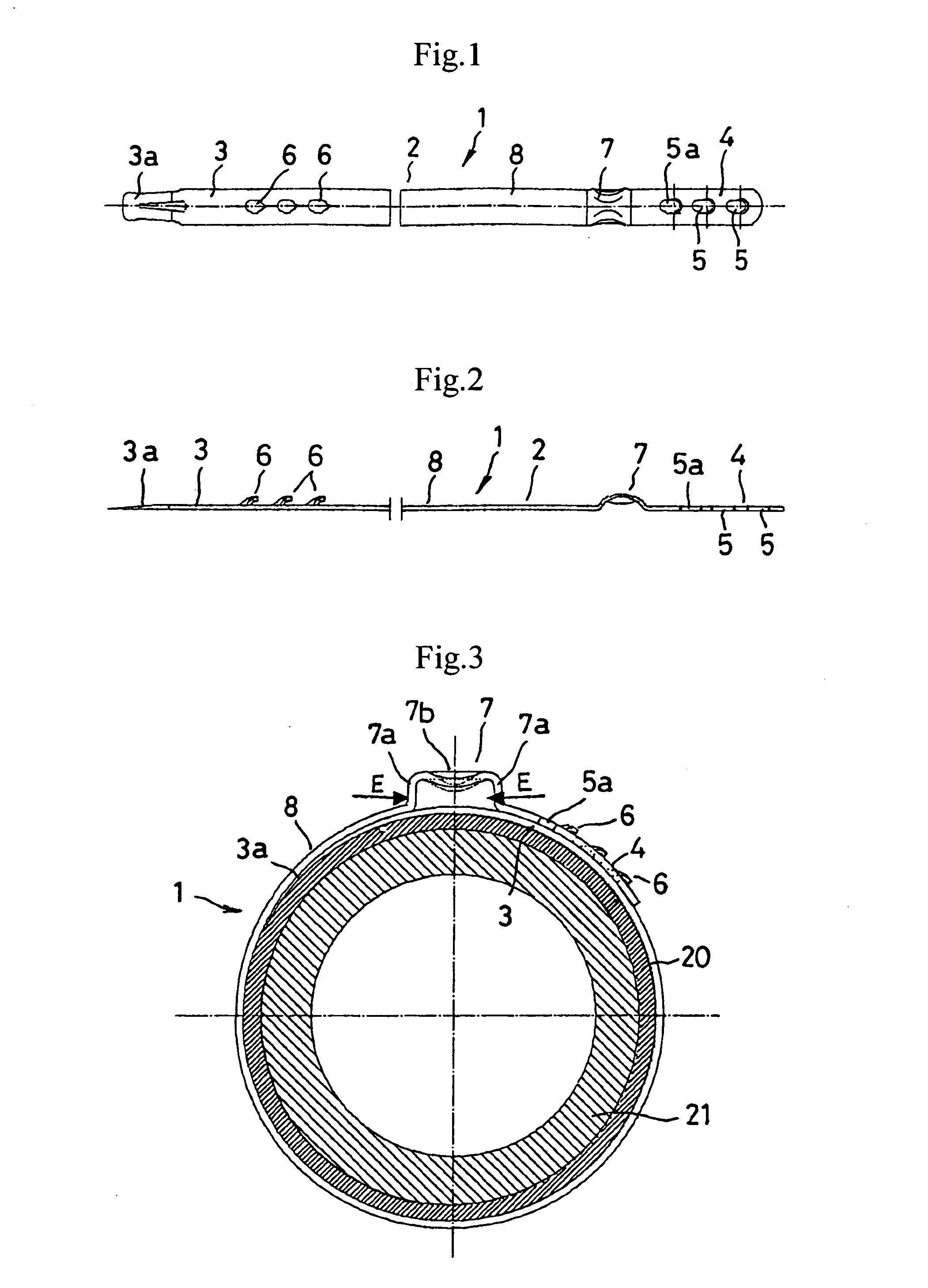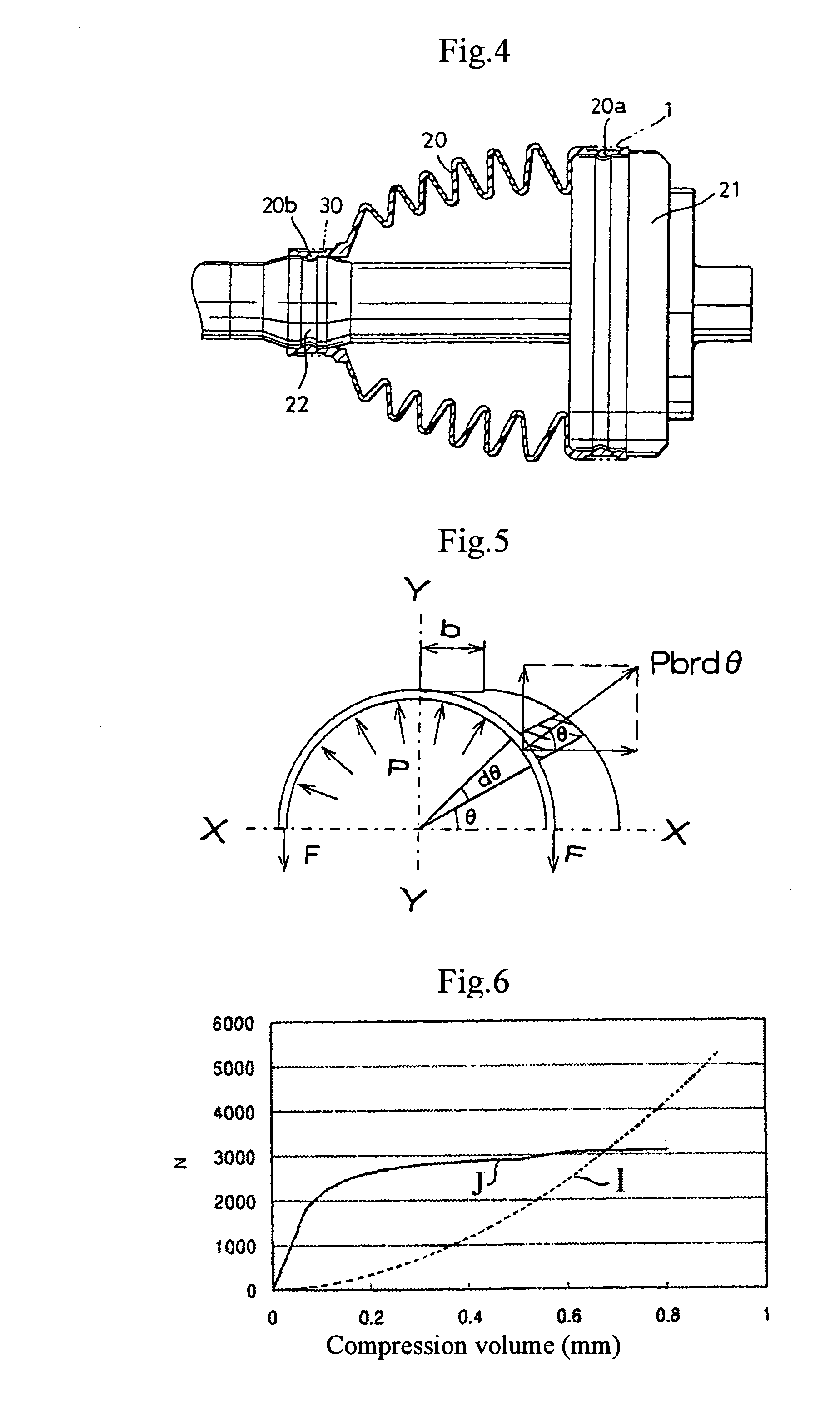Boot band
a technology of boot straps and bands, applied in the direction of hose connections, couplings, mechanical equipment, etc., can solve the problems of excessive clamping of the boot, deterioration of sealing properties, and increased load on the boot, so as to shorten the length of the boot straps, prevent the effect of boot breaking and wide range of tolerances
- Summary
- Abstract
- Description
- Claims
- Application Information
AI Technical Summary
Benefits of technology
Problems solved by technology
Method used
Image
Examples
embodiment 1
[0036]FIGS. 1 through 8 relate to a boot-band 1 in Embodiment 1 of the present invention. FIG. 1 is a plan view of the boot-band FIG. 2 is a side elevation view thereof; and FIG. 3 is a cross-sectional view of a boot-band 1 when it is wound around a boot 20.
[0037] The boot-band 1 has a belt-shaped member 2 that is made of a metal such as stainless steel, and that is formed into a thin horizontal shape. As shown in FIG. 3, the belt-shaped member is wound around the boot 20 so as to surround the boot 20 like a ring. At the time of winding, the belt-shaped member 2 is in such a condition that an outer portion 4 is overlapped onto the inner portion 3 of the belt-shaped member 2 that is in contact with the outer periphery of the boot 20. In addition, as shown in FIG. 4, the boot 20 is used so as to cover a metallic member 21 such as a shaft.
[0038] A plurality (three in this embodiment) of engagement holes 5 (in FIGS. 1 and 2), 5a (in FIGS. 1, 2, and 3) are formed in the outer overlap p...
embodiment 2
[0069]FIGS. 9 through 12 show a boot-band 30 in Embodiment 2. The boot-band 30 in this embodiment is constituted such that an opening 31 is formed in the boot-band 1 of Embodiment 1.
[0070] The opening 31 is formed as a rectangular shape, positioned adjacent to the ear portion 7 of the belt-shaped member 2. When the belt-shaped member 2 is wound like a ring, as shown in FIG. 11, the opening 31 is positioned in the outer overlap portion 4, and it does not contact the boot 20. Accordingly, the opening 31 does not bite into the boot 20. The opening 31 is formed by punching at a predetermined portion of the belt-shaped member 2, and the opening 31 serves as a smaller-cross-sectional area that elongates when the boot-band 30 is clamped.
[0071] In this embodiment, as is similar to Embodiment 1, a plurality of engagement holes 5, 5a are formed on the outer overlap portion 4 of the belt-shaped member 2, and a plurality of engagement prominences 6 that are to be engaged with the engagement h...
embodiment 3
[0086]FIGS. 13 through 17 show a boot-band 40 in Embodiment 3. On the side of the outer overlap portion 4 of the boot-band 40, a lock hole 41, a projection 45, and a tack hole 43 are formed in that order from the opening-side end (the left end in FIGS. 13 and 14) in a lengthwise direction (to the right). Also, on the side of the inner portion 3 of the belt-shaped member 2, a projection 46, a locking projection 42, and a connecting projection 44 are formed in that order from the side of the outer overlap portion in the lengthwise direction (to the right).
[0087] By the clamping action of the boot-band 40, the lock hole 41 and the locking projection 42 are engaged with each other and maintain a clamping condition; these therefore act as a clamping means. The tack hole 43 and the connecting projection 44 are engaged with each other, so that the belt-shaped member 2 is temporarily tacked in a ring-shape condition. Also, as the tack hole 43 is formed into a rectangular shape, it acts to ...
PUM
 Login to View More
Login to View More Abstract
Description
Claims
Application Information
 Login to View More
Login to View More - R&D
- Intellectual Property
- Life Sciences
- Materials
- Tech Scout
- Unparalleled Data Quality
- Higher Quality Content
- 60% Fewer Hallucinations
Browse by: Latest US Patents, China's latest patents, Technical Efficacy Thesaurus, Application Domain, Technology Topic, Popular Technical Reports.
© 2025 PatSnap. All rights reserved.Legal|Privacy policy|Modern Slavery Act Transparency Statement|Sitemap|About US| Contact US: help@patsnap.com



